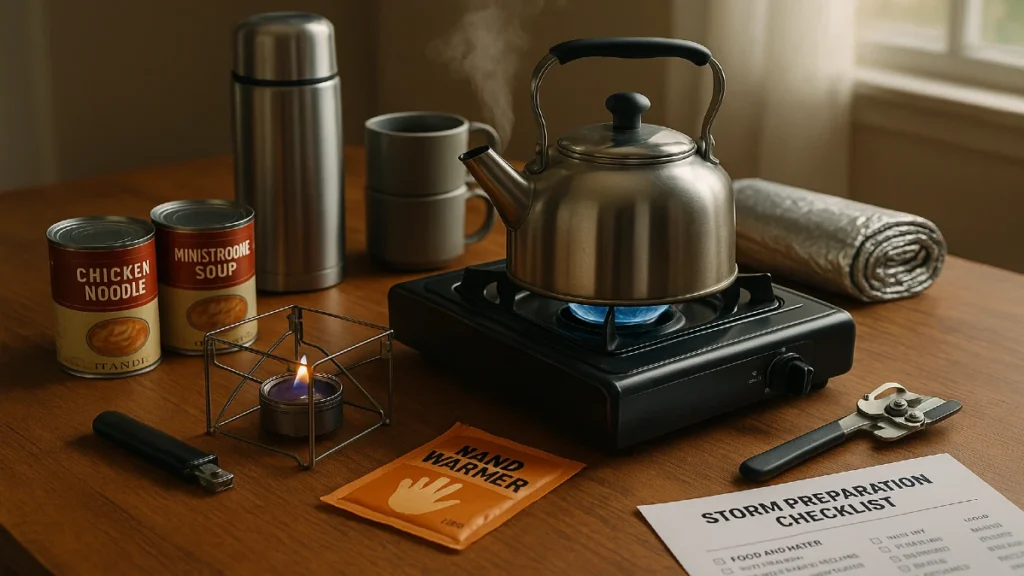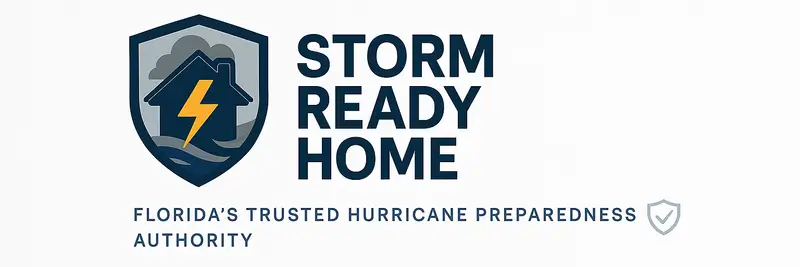
Emergency Cooking: Stay Safe, Fed, and Warm During Blackouts
When the power goes out, safe and reliable emergency cooking becomes essential for every family. Without electricity, preparing hot meals and drinks can be a real challenge—but the right emergency cooking tools make it easy to stay comfortable and prepared.
This guide from Safe Family Gear shows you how to cook indoors safely, heat food and water, and keep your family warm using trusted and affordable emergency cooking solutions—perfect for blackouts and power outages.
Why Emergency Cooking Matters
Enjoying a hot meal or warm drink during a blackout is about more than just nutrition—it boosts morale, provides comfort, and helps your family feel secure. That’s why emergency cooking tools are a must for every home emergency kit.
Safe Indoor Emergency Cooking Tools
Choose these indoor-safe emergency cooking options (always use with proper ventilation and follow safety instructions):
- Portable butane stoves – Fast, reliable, and safe for indoor use with ventilation.
- Sterno canned heat with folding stands – Lightweight, simple way to warm soup, water, or drinks.
- Electric hot plates – Perfect for emergency cooking if you have solar or battery backup power.
For best results, follow all manufacturer safety instructions and ventilate your space as needed.
Always follow instructions and crack a window or use near ventilation if using open flame indoors.
- Double wind guard reduces loss of BTU/hr. from wind or air conditioning
- Great for outdoor cooking or use indoors at commercial restaurants
- High-impact protective carrying case
Outdoor Emergency Cooking Options
If it’s safe to go outside during a power outage, outdoor emergency cooking gives you the most flexibility. Reliable outdoor cooking tools help you prepare full meals, boil water, and keep your family nourished even when the grid is down.
Important: Only use these emergency cooking options outdoors in a well-ventilated area. Never bring grills or stoves inside, as carbon monoxide is extremely dangerous. For safety tips, see CDC guidelines on carbon monoxide safety.
- Propane Camping Grills
Portable and easy to set up, propane camping grills are a top choice for emergency cooking outdoors. They’re great for grilling, boiling water, and cooking a variety of foods when the power is out. - Backyard Gas Grills with Full Propane Tanks
If you have a backyard gas grill and a full propane tank, you can easily prepare hot meals and grill meats or sides for your family in any emergency. - Rocket Stoves
Rocket stoves use sticks or wood pellets and are highly efficient for off-grid cooking. No gas or electricity required, making them perfect for blackout situations. - Cast Iron Pans & Grill-Top Griddles
Heavy-duty cast iron cookware is ideal for use on any open flame, grill, or even a campfire. Cast iron holds heat well, cooks evenly, and is essential for outdoor emergency cooking.
Never bring outdoor stoves or grills inside. Carbon monoxide can be deadly indoors. Learn more from the CDC.
Outdoor Cooking Options
If it’s safe to go outside, these cooking options give you more flexibility during an emergency or power outage.
Propane Camping Grills
Portable and easy to set up, propane camping grills are perfect for outdoor cooking when you need reliability. Great for grilling, boiling water, and more.
Backyard Gas Grills with Full Propane Tanks
If you have a backyard grill and a full propane tank, you can easily prepare full meals, grill meats, and cook sides for your family even during an outage.
Rocket Stoves
Rocket stoves are highly efficient and burn small sticks or pellets. They’re ideal for emergency cooking and don’t require gas or electricity.
Cast Iron Pans & Grill-Top Griddles
Heavy-duty cast iron pans and griddles can be used over any open flame or grill. They’re versatile, durable, and perfect for a variety of outdoor meals.
Warming Drinks and Food During Blackouts
In any blackout or emergency, the ability to quickly heat up broth, coffee, or tea can provide comfort and boost morale. Emergency cooking isn’t just about full meals—hot drinks and simple soups help keep everyone feeling better and more secure.
- Insulated Mugs and Thermoses
Keep beverages hot for hours and minimize heat loss. Essential for any emergency cooking kit, especially during cold weather.
- Compact Kettles for Portable Stoves
Boil water quickly for tea, coffee, soup, or instant meals, even when the power is out. Choose models designed for use on emergency stoves.
- 【Enjoy Hot Drinks Anywhere]】ALOCS tea kettle designed for adventurers, this 0.8L capacity kettle provides premium hot be…
- 【High-quality & Safety】This tea kettle stovetop Crafted from durable, food-grade hard-anodized aluminum, water kettle wi…
- 【Lightweight & Portable】Our kettle teapot is super portable, weighing only 6.7 ounces/190 grams and comes with a mesh ba…

Well-chosen gear for emergency cooking ensures your family can stay nourished, hydrated, and comfortable no matter how long the outage lasts.
Fuel Storage and Usage Tips
Always store fuels like butane, propane, and Sterno in a cool, dry, and ventilated area. Rotate supply annually and follow storage guidelines on the container. Keep a backup lighter or waterproof matches in your kit.
What NOT to Use Indoors
- Charcoal grills
- Propane fire pits
- Kerosene heaters (unless specifically indoor-rated)
- Any open-flame heat source without airflow
These options can cause carbon monoxide poisoning. Always choose indoor-safe alternatives and open a window when using open flame.
Final Recap
With the right off-grid cooking and heat tools, you don’t need to rely on the grid to keep your family warm, fed, and calm during a power outage.
✅ Want the full storm plan? Download the Free Storm-Ready Checklist
FAQs
What is the safest indoor cooking method during a blackout?
A butane stove with proper ventilation is one of the safest and most effective options. Sterno heat is also safe for warming food and drinks.
Can I use my gas grill indoors during a storm?
No. Never use gas grills or any propane or charcoal burner inside. The carbon monoxide risk is extremely dangerous.
What should I include in my off-grid cooking kit?
Include a portable stove, fuel canisters, a kettle, lighter, canned meals, utensils, and hand warmers. Rotate supplies once per year.
























